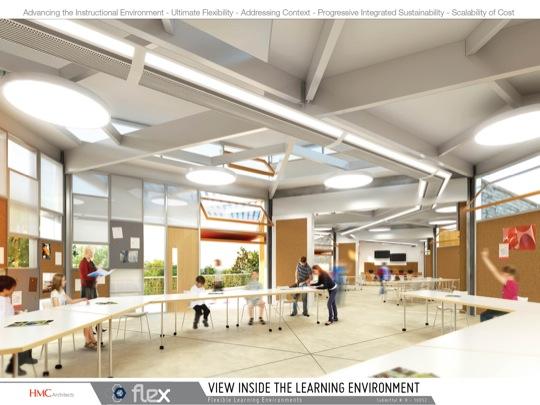Flexible Hybrid Classrooms: Innovative Design Strategies for Modern Learning
With the rapid evolution of technology and the dynamic needs of 21st-century learners, the concept of flexible hybrid classrooms has become a cornerstone of modern education. These innovative learning environments combine in-person and virtual experiences, empowering educators to reach students wherever they are while delivering engaging, collaborative, and personalized lessons. In this extensive guide, we’ll dive deep into the essential design strategies that make flexible hybrid classrooms prosperous, explore their multiple benefits, and share practical tips and case studies for transforming the learning experience.
What Are Flexible Hybrid Classrooms?
Flexible hybrid classrooms are educational spaces designed to support both face-to-face and remote learners together. By leveraging smart architecture, advanced technology, and adaptive furniture, these classrooms accommodate varying teaching methods, student needs, and learning styles. This approach fosters inclusivity, collaboration, and optimal educational outcomes in a constantly changing environment.
- Blended Learning Integration: Seamlessly combines digital and physical instruction
- Technology-Enhanced Spaces: Interactive whiteboards, video conferencing, and online resources
- Adaptive Furniture: Modular desks and chairs for swift reconfiguration
- Equitable Engagement: Tools for enhancing participation, regardless of location
Benefits of Flexible Hybrid Classrooms
Designing hybrid classrooms with versatility in mind offers numerous advantages for students, instructors, and educational institutions. Here are some of the key benefits:
1. Personalized Learning Experiences
- Supports differentiated instruction to meet diverse student needs
- Enables self-paced learning with access to digital resources
- Offers varied teaching models such as flipped classrooms and team-based learning
2.enhanced Accessibility & Inclusion
- Allows participation from remote locations
- Integrates assistive technologies for students with disabilities
- Fosters global classroom collaborations
3. Greater Collaboration
- Utilizes cloud-based platforms for seamless dialogue
- Facilitates group projects between on-site and remote students
- Promotes shared learning and teamwork
4. Optimal Resource Utilization
- Maximizes use of physical and digital resources
- Reduces the need for physical space expansion
- Improves cost efficiency for institutions
Innovative Design Strategies for Flexible Hybrid Classrooms
Transforming customary classrooms into flexible hybrid learning spaces requires thoughtful planning and creative design.Here are proven strategies to guide your implementation:
1.Modular and Mobile Furniture
- Adaptability: Use lightweight, stackable desks and chairs for quick room layouts
- Zones: Create distinct areas for individual, group, and virtual collaboration
- Movement: Encourage student mobility, allowing for active learning and participation
2. Advanced AV Technology integration
- Interactive Displays: Install touch-enabled whiteboards for dynamic presentations
- Reliable Video Conferencing: Invest in HD cameras, microphones, and speakers to connect in-person and remote learners
- Wireless Connectivity: Ensure robust Wi-Fi and device compatibility
3. Flexible Layouts with Zoning
- Design the classroom with moveable partitions or curtains to separate learning zones
- Allow for quick transitions between lecture, discussion, and group work modes
- Create quiet corners for focused or exam activities
4. Smart Lighting and Acoustics
- Use adjustable lighting to reduce screen glare and improve visibility
- Install sound-absorbing panels to minimize noise,ensuring clarity for virtual interactions
- Implement voice amplification for instructors
5. Accessibility Considerations
- Make sure entrances, seating, and technology are accessible to all students
- Provide closed captioning and screen readers for remote learners
- Design clear paths for safe movement and collaboration
Practical Tips for Implementing Hybrid Classroom design
Moving to a flexible classroom model can be a significant shift. Here are practical tips for a smooth transition:
- Conduct Needs Assessments: Survey students and teachers to understand specific requirements
- Start Small: Pilot new technologies and layouts before full-scale rollout
- Faculty Training: Offer ongoing professional development focused on hybrid teaching and technology use
- Continuous Feedback: Regularly collect feedback to refine classroom designs
- Engage Stakeholders: Include educators, students, and facility managers in the design process
Case Study: Real-World Success with Hybrid Classroom Design
Riverbend Secondary School is a leading example of how innovative hybrid classroom designs can transform the learning experience. Facing increasing enrollment and shifting student expectations, Riverbend partnered with educational architects and AV specialists to redesign its learning spaces.
- Flexible Modules: All classrooms feature modular furniture adaptable for lectures, seminars, and collaborative projects.
- Tech Integration: Every space is equipped with interactive screens, document cameras, and wireless streaming capabilities.
- Hybrid Participation: students can join live classes remotely, interacting in real time with on-site peers.
- Outcome: Surveys revealed a 32% increase in student engagement and improved academic performance across all grades.
First-Hand Experience: Educator’s Outlook
“Teaching in a flexible hybrid classroom has wholly transformed my approach. I can adapt lessons to individual students and facilitate group work without losing remote participants. The technology and classroom layout help foster a sense of community—whether a student is on campus or connecting from home.”
– jamie L., High School Teacher
WordPress CSS Styling Tips for hybrid Classroom Content
To make your classroom design content visually appealing on your WordPress website, consider incorporating the following CSS styles:
/* Highlight section headers for easy navigation */
h2 {
color: #0073aa;
border-bottom: 2px solid #ededed;
padding-bottom: 6px;
margin-top: 32px;
}
/* style bullet points for clarity */
ul {
list-style-type: disc;
margin-left: 24px;
}
/* Blockquote enhancements */
blockquote {
border-left: 4px solid #0073aa;
background: #f9f9f9;
padding: 16px;
font-style: italic;
}
These styles can be added to your WordPress site’s CSS editor to make your article attractive and user-kind.
Conclusion: Shaping the future of Learning Environments
Flexible hybrid classrooms represent a transformative step toward inclusive, effective, and future-ready education. By embracing innovative design strategies—ranging from modular layouts to integrated technology—institutions can unlock new possibilities for student engagement and achievement. As you plan your next classroom redesign, prioritize adaptability, accessibility, and collaboration—and you’ll be well-equipped to support modern learning needs.
For more expert insights and practical guides on hybrid classroom design, follow our blog and subscribe for the latest trends in education innovation!

